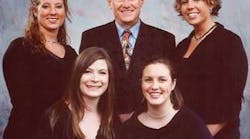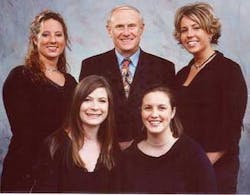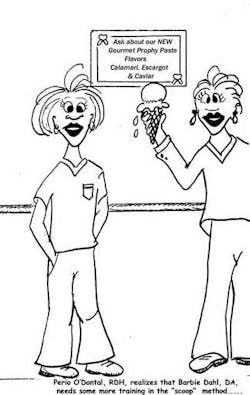by David P. Reichwage, DDS, Cassie M. Strickler, RDH, Denise Marr, CDA, EFDA, Kristen Castle CDA, EFDA, and Amber M. Jaress, EFDA
What’s your “attitude” toward continuing education for the entire dental team? Is everyone a “sponge” about new ideas for dental care?
The “standard of care” in dentistry has always been an elusive concept. The standard of care, as actually practiced, often seems to be related more to situational ethics and personal motivation than to predictable scientific theory.
In 2005, many times every week, we asked patients new to our practice these questions:
• “Has anyone ever measured your gum tissue with an instrument like this periodontal ruler?”
• “Has anyone talked with you about the condition of your gum tissue, and how it affects your teeth and overall health?”
• “Has anyone explained the significance of the separation occurring between your fillings and your teeth?”
The answer was always a resounding “no.” Dental experts can write volumes of journal articles on these topics and discuss them endlessly; however, in our opinion, the nebulous state of dentistry’s “standard of care” is directly proportional to the quality of continuing education for the entire dental team.
We challenge you to attend any dental meeting that focuses on new techniques, materials, and procedures, and scan over the members of the audience. There are about six attitudes reflected by those in attendance. The first one is, “I don’t want to change or do anything different. It takes too much energy, time, and money. I’m just plain lazy. It’s not about what I can do to make something work. It’s about why I know it won’t work. I’ve always done it like this, and I’m not interested in something new.”
The second attitude is critical, condescending, divisive, and negative about new technology, procedures, protocols and materials. The theme is, “It can’t be done,” implying, “If you do this, you can’t be doing dentistry properly.”
The third attitude is from the dentist who spends time and money on continuing education in order to bring in exciting new ideas to the practice, but for a team that doesn’t accept change and wants to keep things the way they have always been. They say, “Patients won’t accept the change, insurance companies won’t pay for it, and it won’t work in our schedule.”
The fourth attitude is territorial. The lines that define “work areas” are quite visible - the “front” and the “back.” “I work in my area, and you work in yours.” Since certain areas have more power than others, pecking orders are well formed.
The fifth attitude reflects the dedicated, hard-working people who go about their day-to-day duties and view their profession as their job. They do dentistry the same way they did 20 years ago; they are content with the way things are, and they will maintain the status quo until they retire.
The sixth attitude is passion about the profession and passion about staying abreast of the best of contemporary dentistry in order to bring that level of care to patients. Their goal is to be the best they can be, and to work smarter, not harder, to reach that goal.
Their priorities are, in order, the well-being of the patient, the team, the practice, and the doctor. They are like sponges for knowledge and information. They work to develop creative and appropriate new ideas, protocols, and policies, and to enhance patient treatment by incorporating new and better technologies, procedures and materials.
Our team, over many years, has changed from a typical number five to an evolving number six, embracing the dynamic team concept and the best of modern dentistry. This required the dentist’s consistent dedication to a vision and refusal to settle for average talent, then finding individuals with the drive and ability to share that vision.
Along the way, the practice “kissed a few frogs,” i.e., utilized consultants and attended training opportunities that failed to move us forward. But the consistent dedication to the vision left us with our own “prince” - a highly motivated, fully cross-trained team of individuals who view themselves as highly functioning, well-trained dental professionals.
This team functions consistently as a patient-centered, smooth-flowing group, and it works hard to bring our patients the best of dentistry’s current capabilities. Relationships between team members and with patients are developed and nurtured, and continuing education is an ongoing priority that is never attended by just the dentist, but by the entire team.
Priorities have evolved to be patient-focused, from which our team derives its greatest sense of professional fulfillment. Although personality conflicts can still occur, personal ambition, power struggles, and political manipulation have become a thing of the past.
Having survived the burnout, the unmotivated staff, the unmotivated dentist, the unwillingness to learn new and better methods, the power struggles between staff members, and the office politics, our team is testament that the negative cycle can be reversed.
We believe the secret to change is the dentist’s, and ultimately the team’s, commitment to ongoing, quality continuing education. It is the only way we have found, after trying many other methods, to create a dynamic team that flourishes by practicing dynamic dentistry.
Excellent continuing education creates a win-win situation, with the patient the ultimate winner!







